



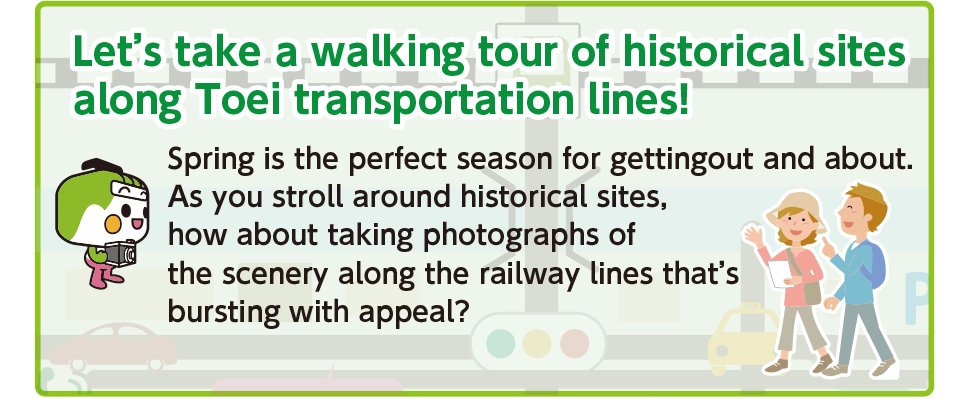
When Tokugawa Ieyasu had major renovations carried out in Zojo-ji Temple in 1605, the Shiba Daimon Gate was constructed as the temple’s main gate at that time. Pass through it and stroll through the abundant greenery of Shiba Park, one of the very first sites in Japan to be designated as a park, along with Ueno Park and others. Inside the park is the Shiba Maruyama Kofun, a keyhole-shaped tumulus that is thought to have been constructed in the 5th century.
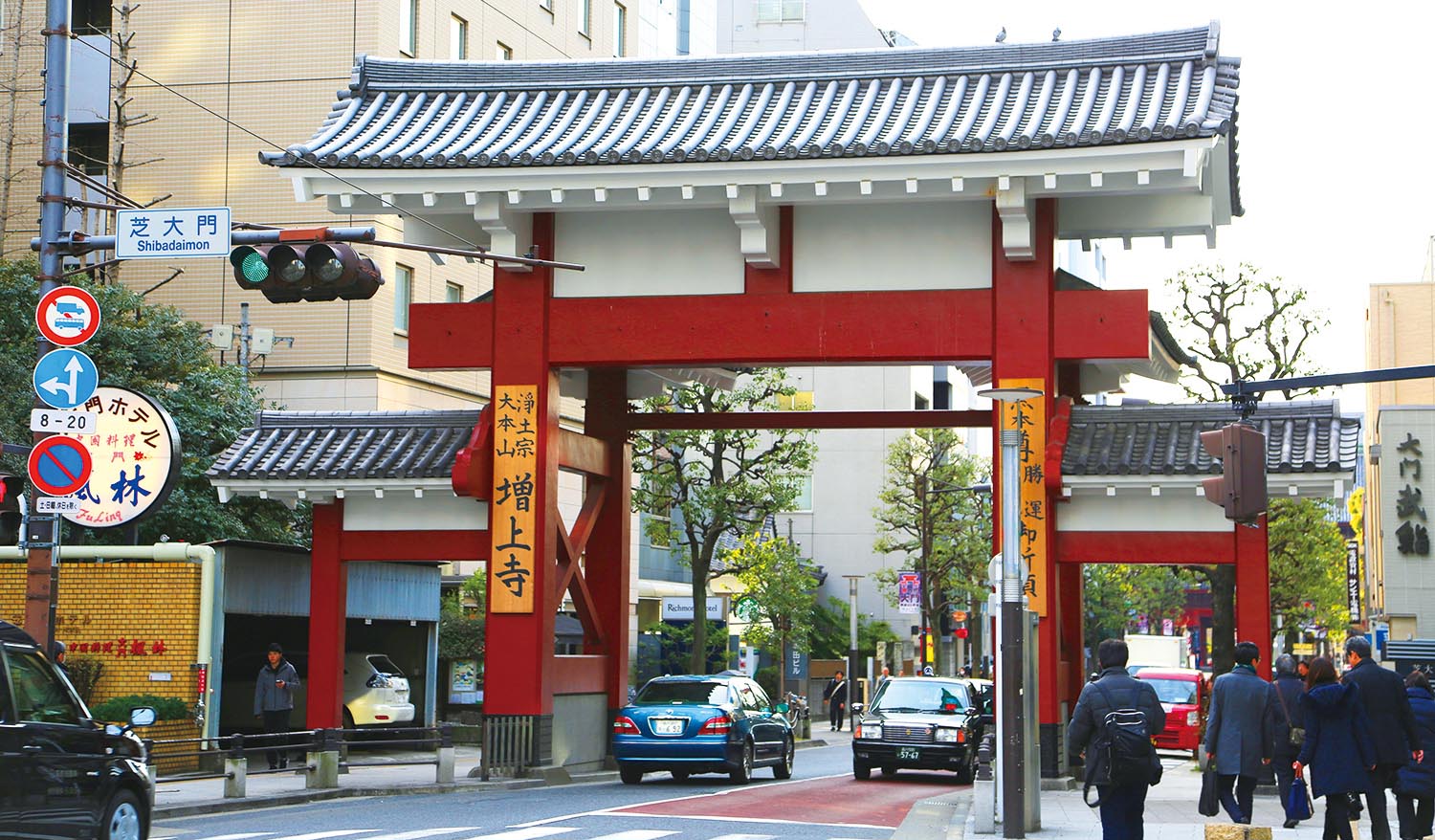
In April 2017, the Shiba Daimon Gate underwent seismic reinforcement, as well as exterior enhancement to spruce up its appearance.
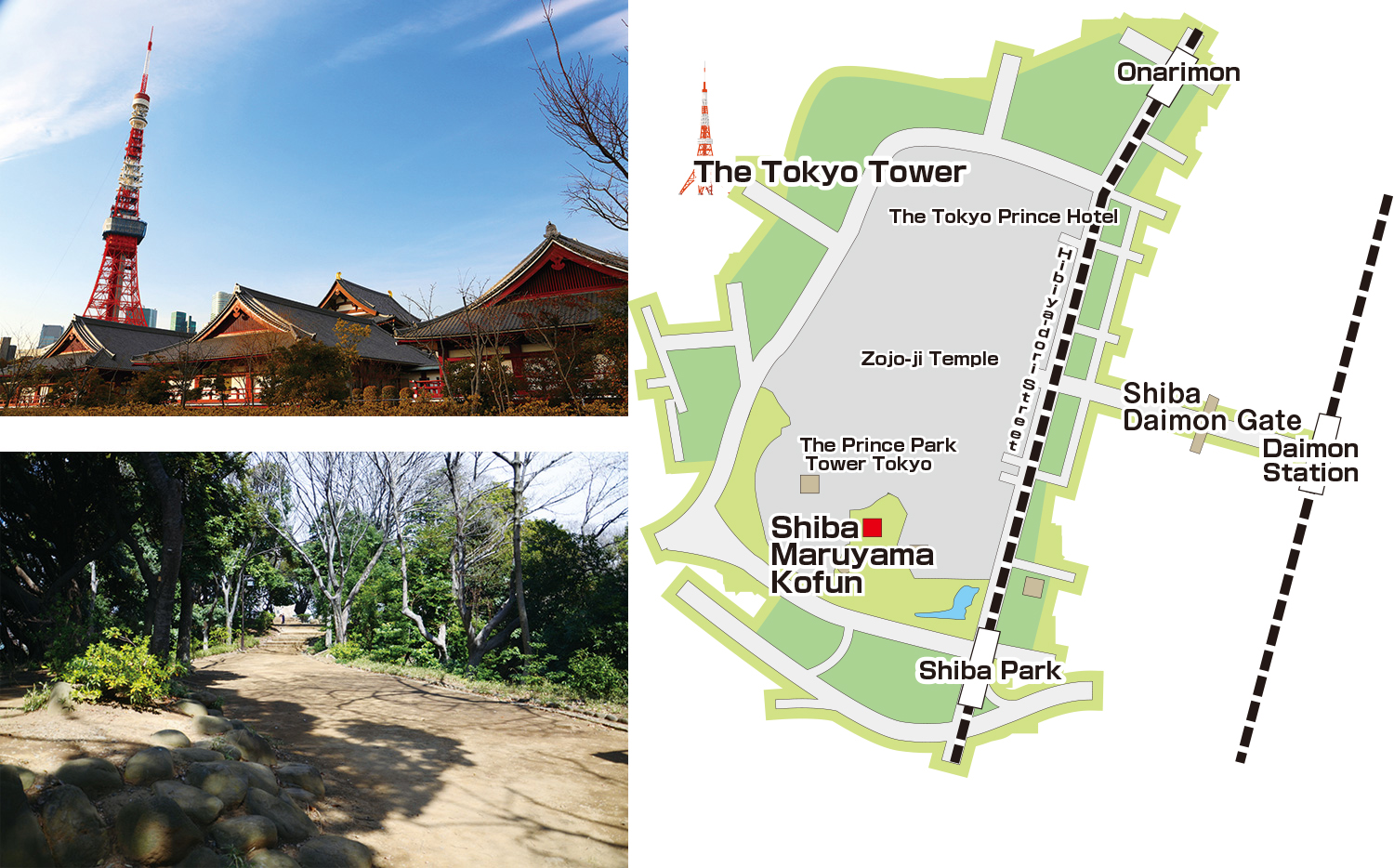
Shiba Maruyama Kofun
Shiba Maruyama Kofun is a designated historic site of the Tokyo Metropolitan Area, and with a length of approximately 106 m, it is one of the largest tumulus in the metropolitan area.
Built in 1917 for the great industrialist Shibusawa Eiichi, who was known as the "Father of Japanese Capitalism," the Bankoro Tea House is a teahouse built in a western style. The Seien Bunko Library, meanwhile, was built in 1925 as both a library and place to receive guests. Both buildings are now designated as national important cultural properties. After savoring the Taisho-Period atmosphere of these two buildings, enjoy a lovely stroll around the Former Shibusawa Garden and Mt. Asuka.
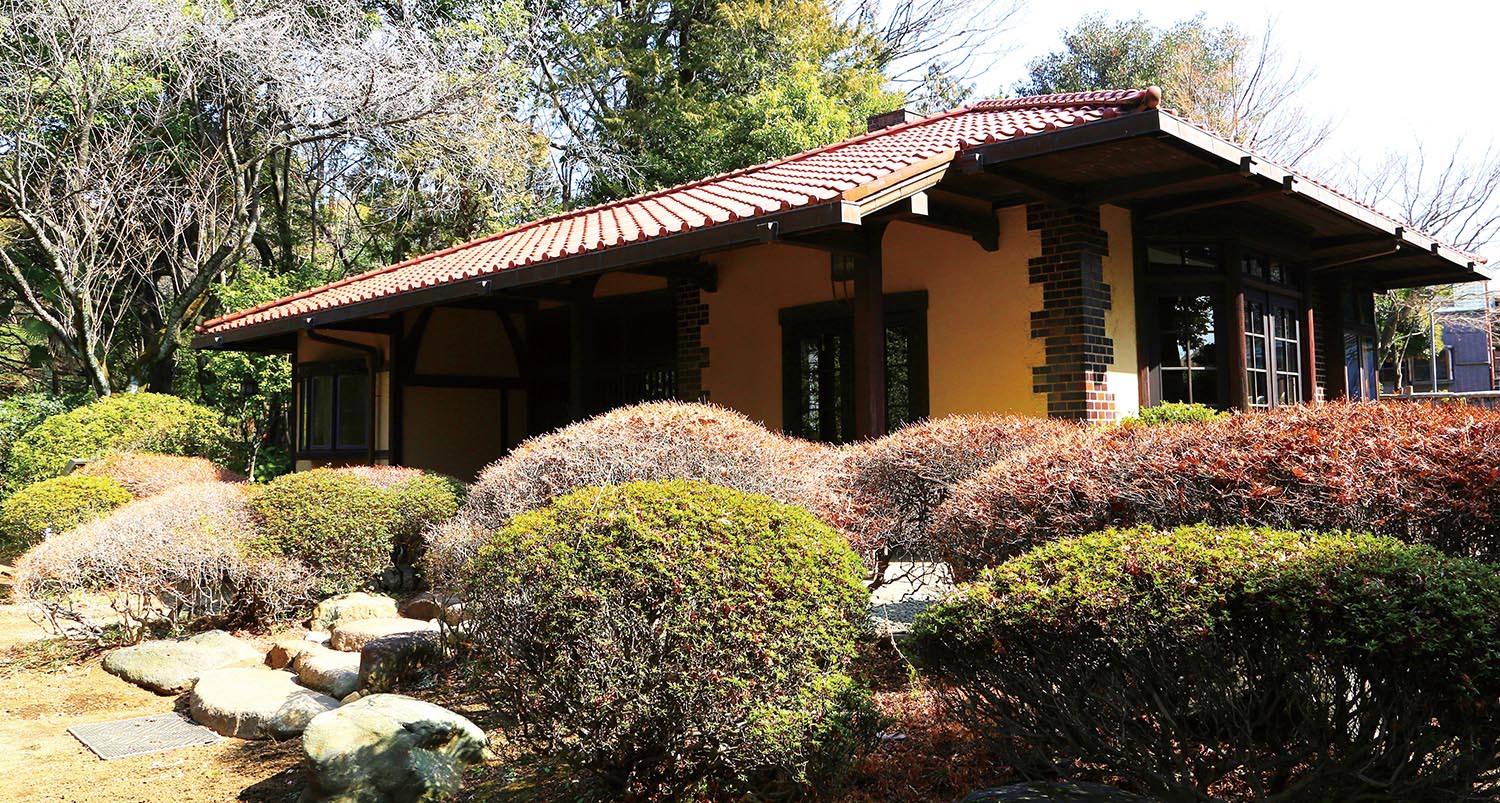
While the exterior of the Bankoro Tea House is beautiful, the interior is also appealing, with features such as a fireplace and firewood container, as well as a desk, couch, and other furniture.
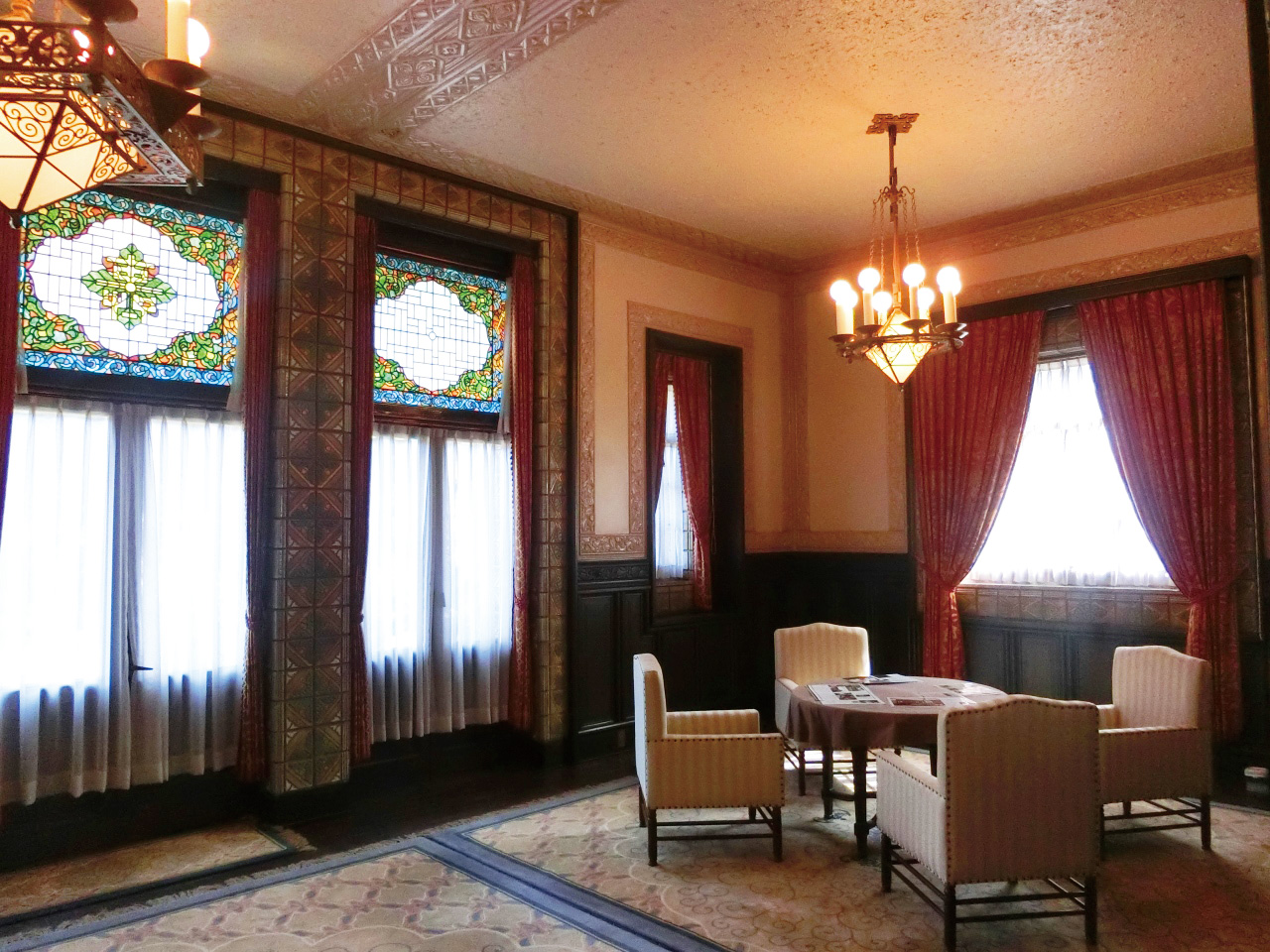
The Seien Bunko Library features gorgeous tiles and stained glass designed in the image of the Shibusawa family crest.
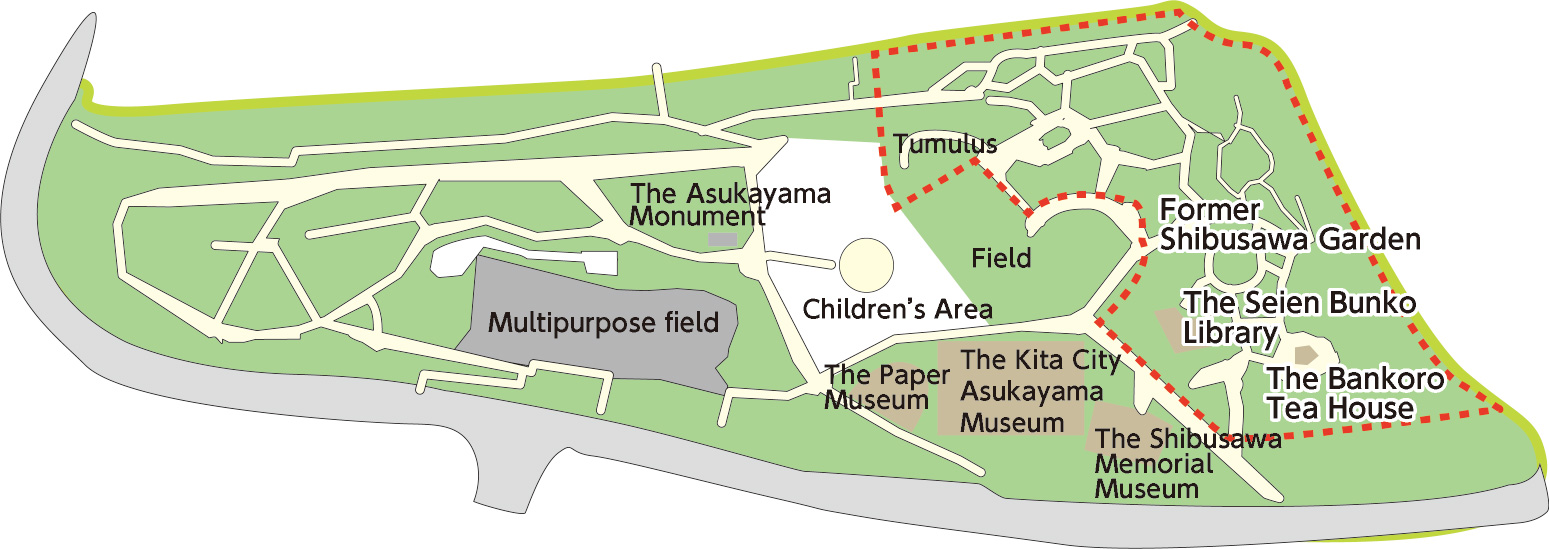
The Furaijin Gate (Kaminari Gate) was originally constructed around the 10th century as the main gate of the Senso-ji Temple. It was moved to its current location in or after the Kamakura Period (1185–1333), and since then has been repeatedly destroyed by fire and rebuilt. With restoration work completed in October 2017, the "Kaminari Gate" is the "face" of the Senso-ji Temple—which welcomes approximately 30 million visitors each year—and one of Japan’s most famous photograph spots.
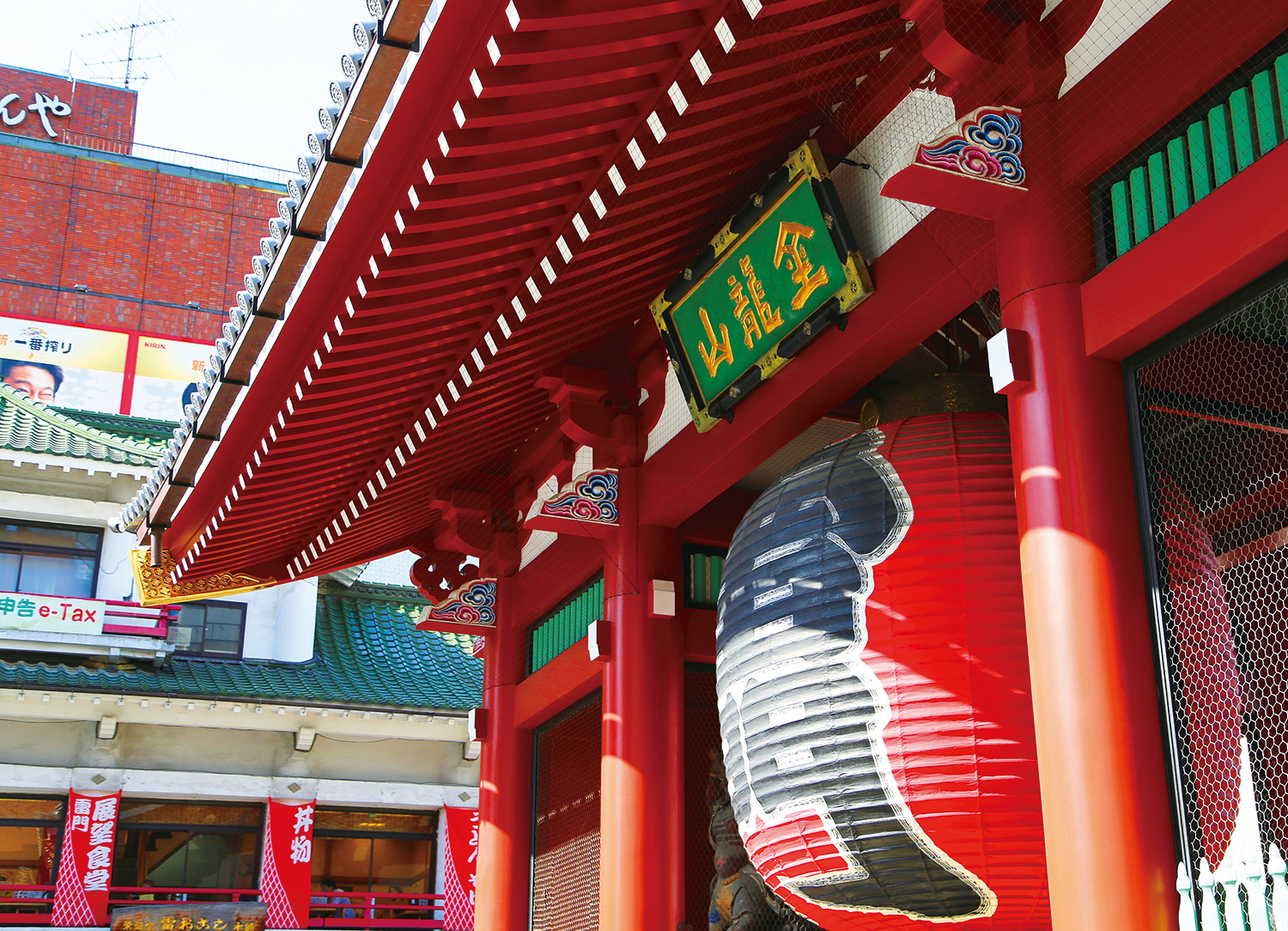
The first enormous paper lantern was donated by Konosuke Matsushita (founder of Panasonic) in 1960.
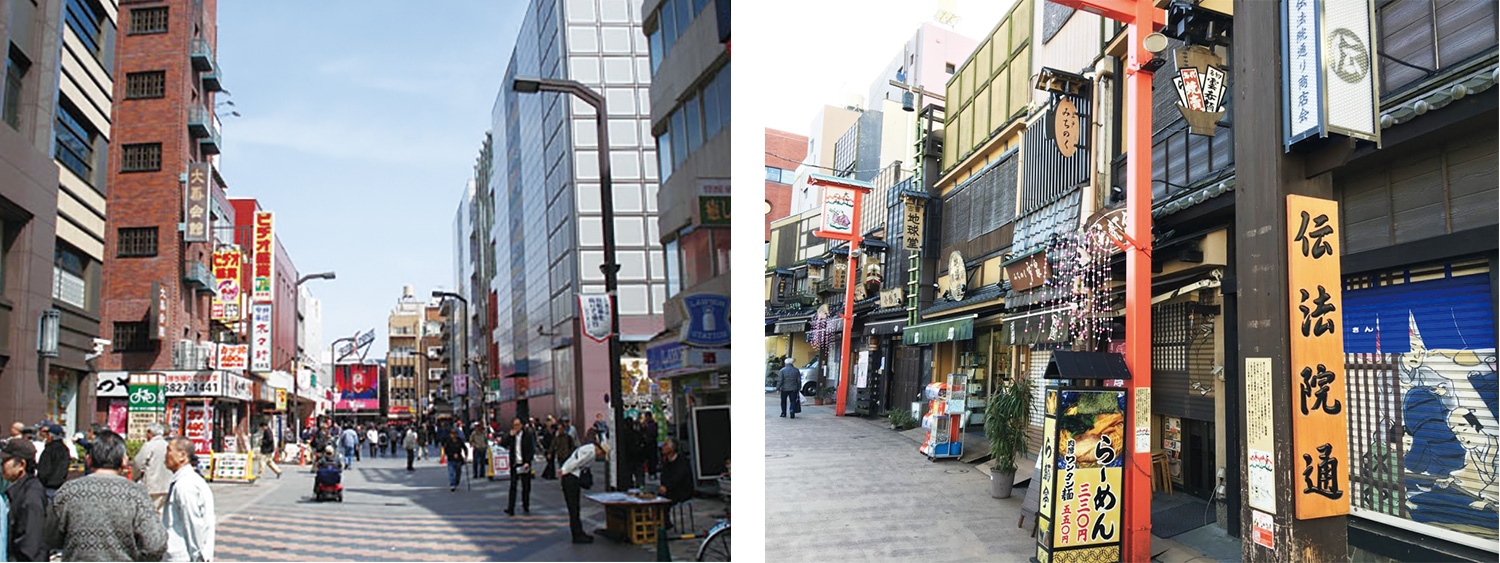
Viewing Point
The Asakusa neighborhood provides appealing scenes on each street-Denboin-dori, Orange-dori, Rokku Broadway, etc.-for you to photograph.

Constructed in 1636, the Tayasumon Gate is a masugata (square-shaped) gate comprising two gates in an L-shape and is designated as an important national cultural property. Beyond the gate is Kitanomaru Park, where you can gaze at the flowers and trees as you stroll around, as well as view the Shimizumon Gate (another important national cultural property), the Gangizaka Slope (which has remained unchanged since the Edo Period), the Kitahanebashimon Gate (od which the roofed mud wall remains), and other historical relics of the old Edo Castle site.
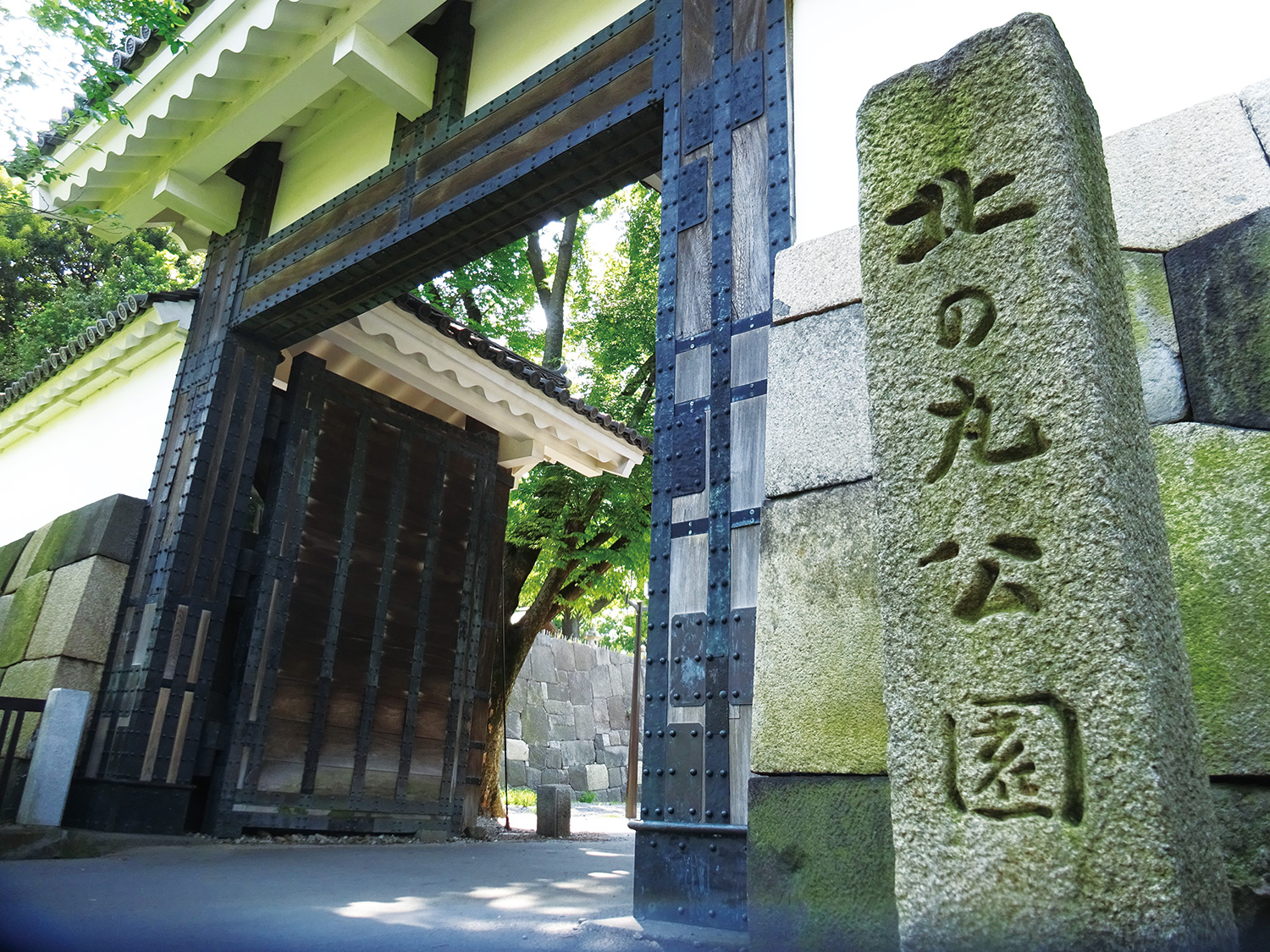
Tayasumon Gate was constructed as a masugata (square-shaped) gate comprising two gates lying at right angles in order to prevent attacking enemies from advancing directly into the castle.
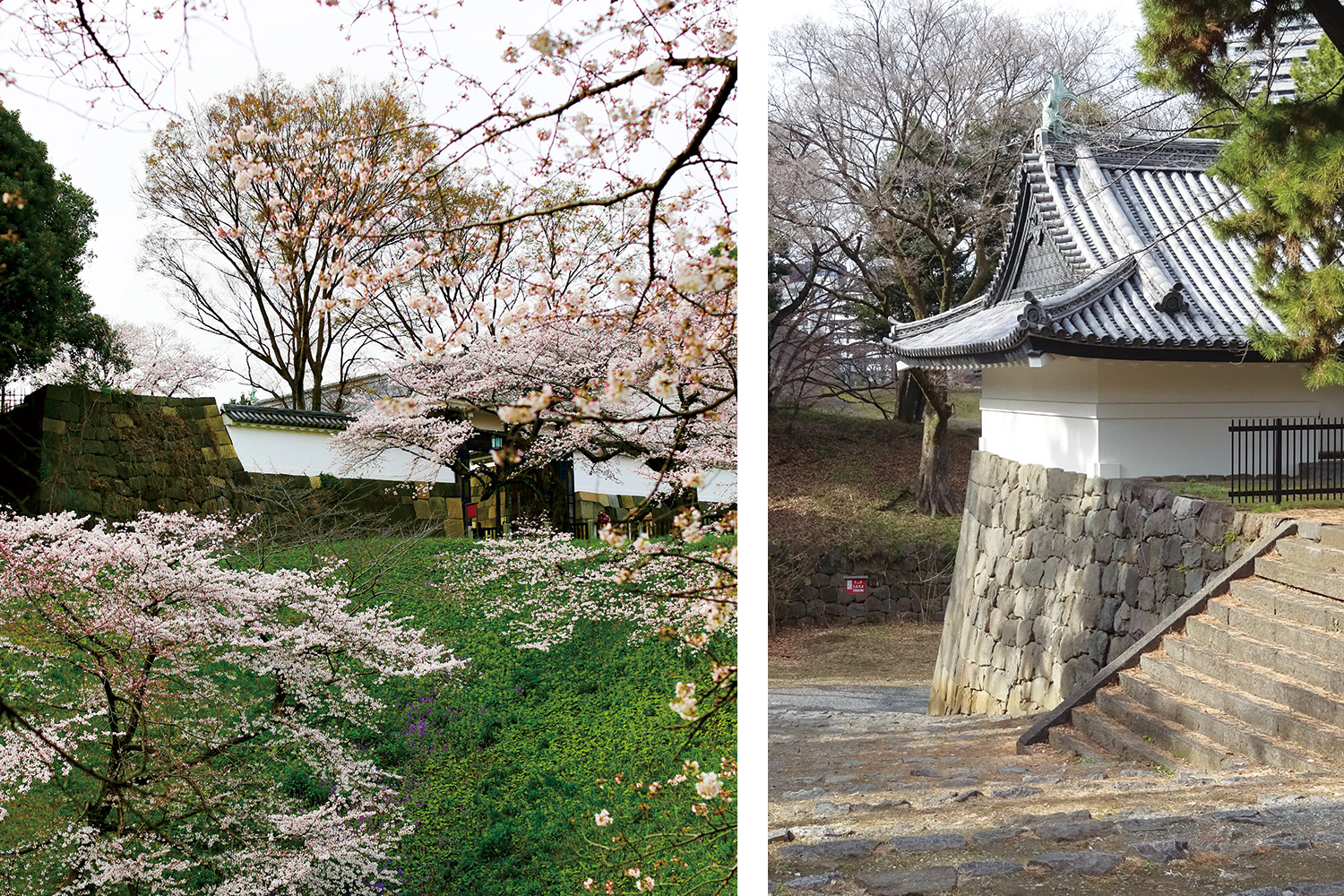
Photograph courtesy of the Kitanomaru Section, Kokyogaien National Garden Office, Ministry of the Environment
Viewing Point
Located near the Shimizumon Gate, which is thought to have been reconstructed in 1658, Gangizaka Slope was built higher and wider in order to slow any invasion by enemy warriors.

Located 26 m above sea level, Atogoyama Hill is a popular walking spot preserving natural greenery in the midst of central-city high-rise buildings. The stone steps up Otokozaka Slope lead straight to the top of the hill and are known as the "Success Steps" in honor of Magaki Heikuro, who is famous for riding his horse all the way to the top of the steps during the era of the Third Shogun, Tokugawa Iemitsu. Many people visit the site to climb the steps, which are now believed to be a power spot for achieving good fortune and success.
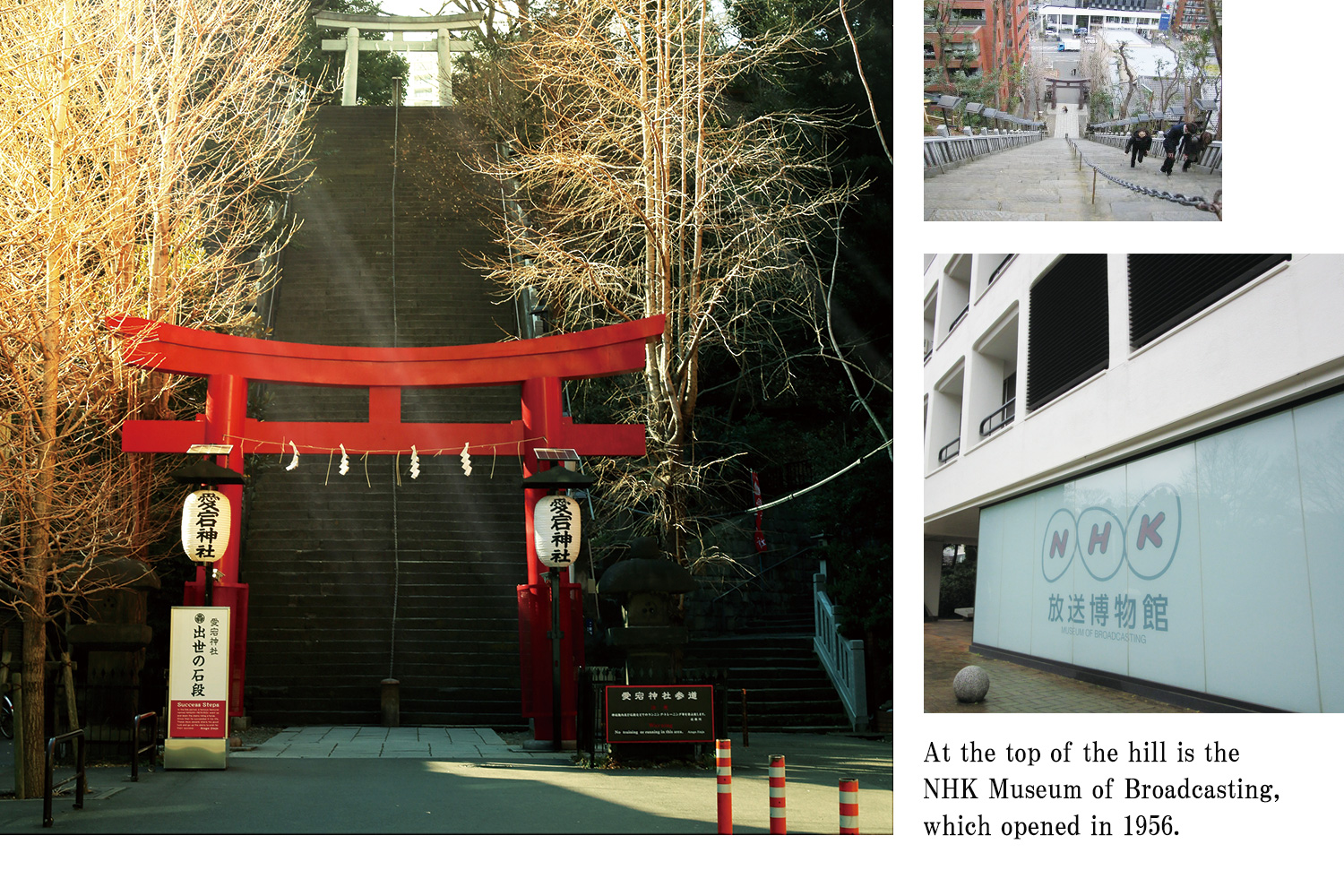
Comprising 86 stone steps going straight up, the "Success Steps" exudes a powerful force that overwhelms all who see it.
Viewing Point
Although the scenery from the windows of the Atogoyama Elevator (which allows you to travel to the top of the hill in comfort) is spectacular, we also recommend the view looking down from the very top step of Otokozaka Slope, especially if you are taking photographs.

The resting place of artist Yokoyama Taikan and many other illustrious figures from history, Yanaka Cemetery is a popular walking spot due to its tranquility and abundant greenery. The nearby Yanaka Ginza Shopping District comprises approximately 70 stores along a 170 m stretch of road. As you stroll about enjoying the retro atmosphere, you can also sample local "Shitamachi gourmet" foods.
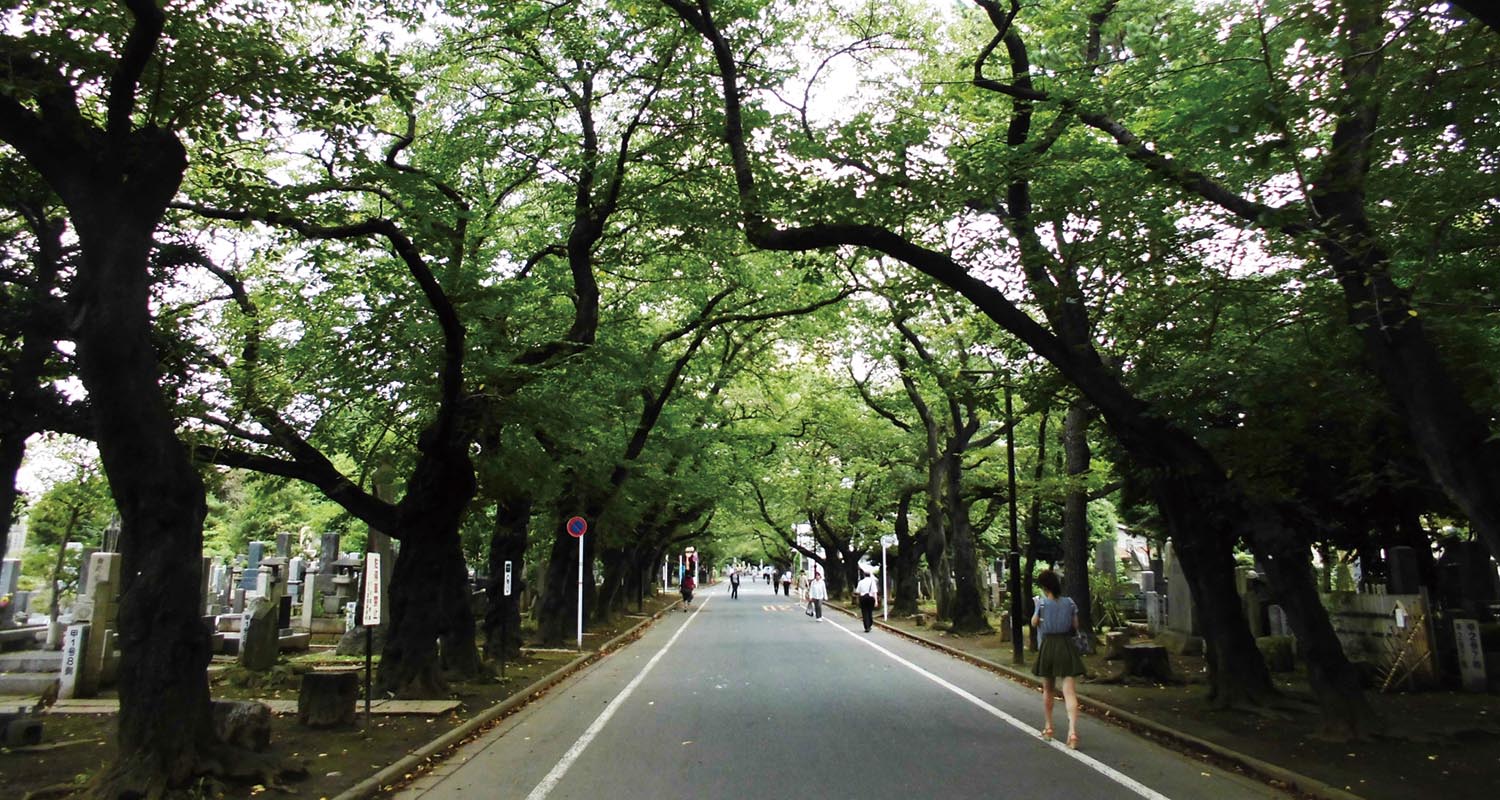
Spacious and filled with greenery, Yanaka Cemetery lets you enjoy a stroll in a calm and peaceful atmosphere.
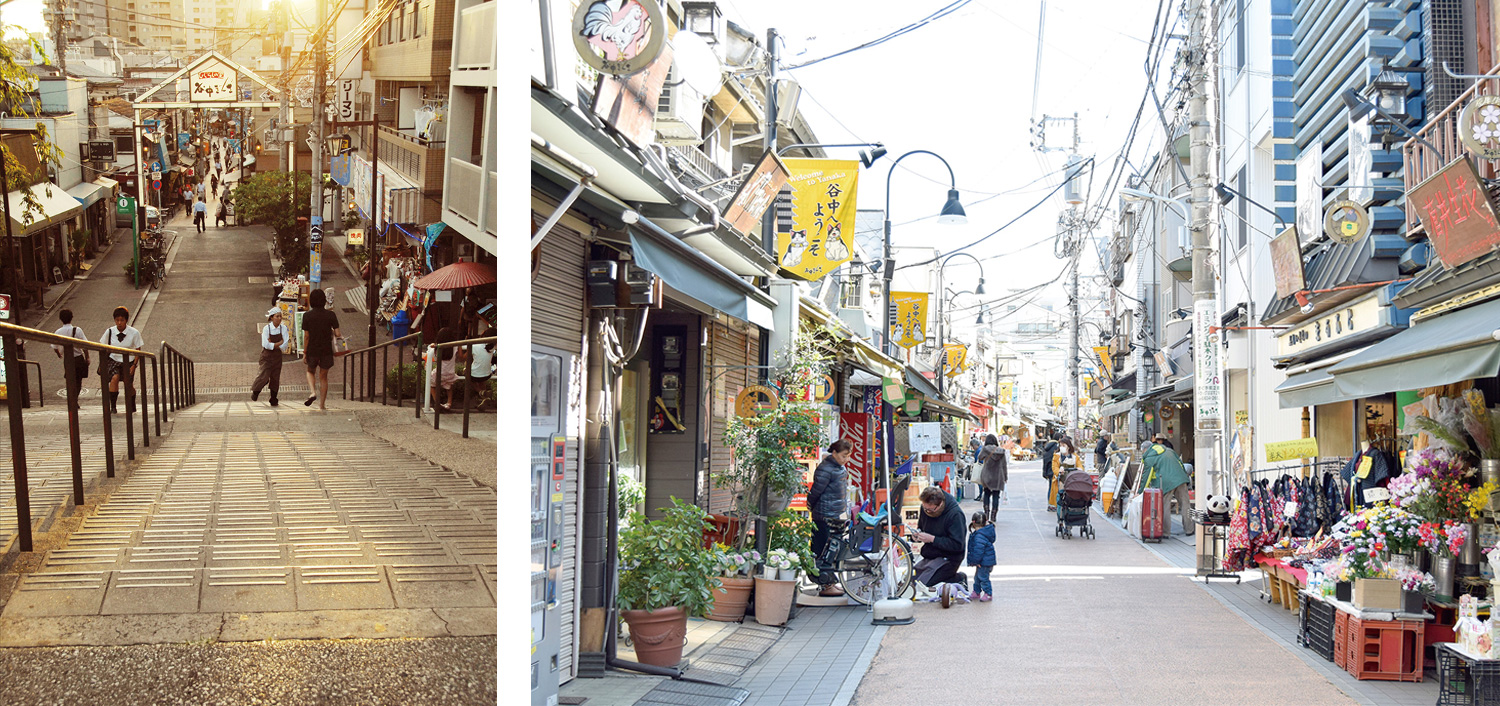
Viewing Point
With the shopping district spread out below exuding a sense of the "good old days," the Yuyake-dandan ("Sunset Stairs") not only provides superb photograph opportunities but is also a famous spot for watching sunsets.

